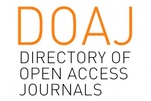Enhancing Learning Support System through the Use of Information and Communication Technology: a Case at Universitas Terbuka
DOI:
https://doi.org/10.17143/rbaad.v5i0.174Resumo
The revolution of information and communication technology (ICT) has brought the new millennium into an information era. The general consensus is that we have entered the information age and that we will not be exempted from the current forces of technological development and globalization (Taylor, 1998), have been acknowledged and realized. Nevertheless, in less advantaged countries, it has also raised a lot of worries. As with other countries, the Indonesian government is determined to harness the use of information and communication technology (ICT) for increasing the country’s national competitiveness. The initial step was done through the establishment of the Indonesian Telematics Coordinating Team (known as TKTI) in 2000, consisting of all cabinet ministers and chaired by the Vice President of Indonesia at the time, Megawati Soekarnoputri. In 2001, the ICT national plan was formulated by Presidential Decree No. 6/2001 (“Guidelines for the Development and Implementation of ICT in Indonesia”), which states the government’s general policy towards ICT and calls on TKTI to take an active role to drive ICT implementation in Indonesia (International Telecommunication Union, 2002) Indonesia is one the largest countries within ASEAN with a population of over 215 million. The country is mostly water (81%) with five big islands and about 14 thousands of small islands. Despite the economic crisis, which started in 1997, Indonesia has progressively increased its telecommunication network over the last decade. Nowadays, Indonesia ranks number 13 within the top 20 countries with highest number of Internet users (Internet World Stats, 2006). However, the percentage of Internet users to the total population is only about 8.1 %. This is slightly lower than the Internet penetration in China (8.5%) and much lower than that in other ASEAN countries such as Malaysia (36.7%) and Singapore (67.2%). According to Internet World Stats (2006), the growth of ICT users in Indonesia within the last five years was phenomenal (800%), increasing the number from around 2 million (in 2000) to about 18 million (in 2005). Nevertheless, only about 8% or only around 1.5 million of those users are Internet subscribers (APJII, 2006). The increase in user number was initially due to the expansion of Internet access points provided by Internet Kiosks (known as WARNET), which are mostly owned by private individual business enterprise. A survey conducted by APJII in 2002 showed that about 43% of users accessed Internet from WARNET (APJII cited in International Telecommunication Union, 2002). The rest accessed Internet from offices (41%), homes (12%), and schools/universities (4%). The growth of WARNET gave a lot of hopes to Indonesians who can not afford to have computers and Internet access in their personal homes and work places; and had helped increase the Internet penetration in Indonesia significantly. However, the later survey in 2004 showed a significant decrease in the number of Internet users surfing from the WARNETs. Nugroho (in Purbo, 2005) reported that this was caused by the reduced number of WARNET from approximately around 2,500 in 2002 to about only 1,724 in early 2004. Discussion in various mailing lists blamed the high telecommunication tariffs for the decreased number of those Indonesian WARNETs. “Other explanations included the conversion of WARNETs into gaming centers, illegal tariffs imposed by local governments, and some local governments requiring WARNETs to apply for a license to operate as entertainment center” (Purbo, 2005, p. 103)
Downloads
Referências
APJII. (2006). APJII website. Available at URL: http://www.apjii.or.id
Belawati, T., Hardhono, A.P., Anggoro, M.T. (2004). ICT-supported distance education in Indonesia: An effort to enhance student learning satisfaction and course completion rates. Final Technical Report of the PAN-DLT Grant Project.
Belawati, T. 1998. Increasing student persistence in Indonesian post-secondary distance education. Distance Education, 19(1), 81-106.
Internet World Stats. (2006). Internet Usage in Asia (Internet Users and Population Statistics for Asia). Available at URL: http://www.internetworldstats.com/
Purbo, O. (2005). Indonesia. In S. Akhtar, C. Charron, S.Y. Chin, & M.Ng Lee Hoon (pp. 100-106), Digital Review of Asia Pacific 2005/2006. Penang, Malaysia: Orbicom, IDRC, UNDP-APDIP.
Salmon, G. (2000). E-moderating: The Key to Teaching and Learning Online. London: Kogan Page.
Taylor, J.C. (1998). The death of distance: The birth of the global higher education economy. Plenary address presented and the ICDE Standing Conference of Presidents, Hyatt Coolum, Queensland, Australia, 13-16 September 1998. Available at http://www.usq.edu.au/DEC/STAFF/TAYLORJ/confer.htm.
Tsang, E. Y. M., Choi, H.M.F., dan Tam,K. (2002). Students’ participation in computermediated communication. In D. Murphy, N. Shin, & W. Zhang (Eds.), Advancing online learning in Asia (pp. 52-65). Hong Kong: Open University of Hong Kong.
Zhang, W., Perris, K. dan Poon, T. (2002). A profile of online education in selected open universities in Asia. In D. Murphy, N. Shin, & W. Zhang (Eds.), Advancing online learning in Asia (pp. 1-15). Hong Kong: Open University of Hong Kong
Downloads
Publicado
Como Citar
Edição
Seção
Licença
Todos os artigos publicados na Revista Brasileira de Aprendizagem Aberta e a Distância (RBAAD) recebem a licença Creative Commons - Atribuição 4.0 Internacional (CC BY 4.0).
Todas as publicações subsequentes, completas ou parciais, deverão ser feitas com o reconhecimento, nas citações, da RBAAD como a editora original do artigo.



 .
.








